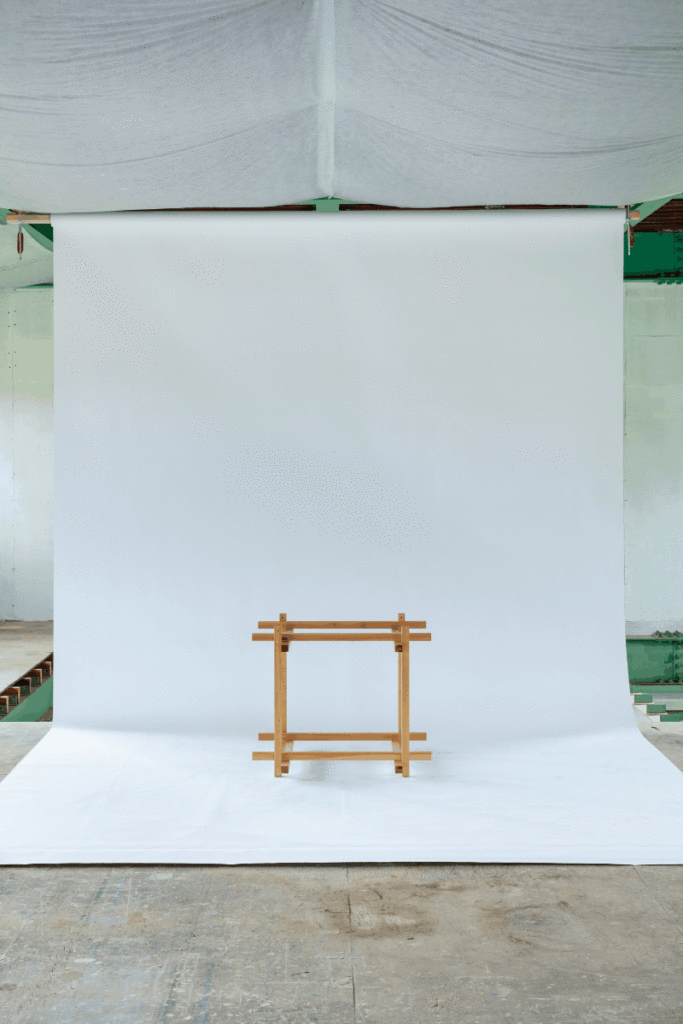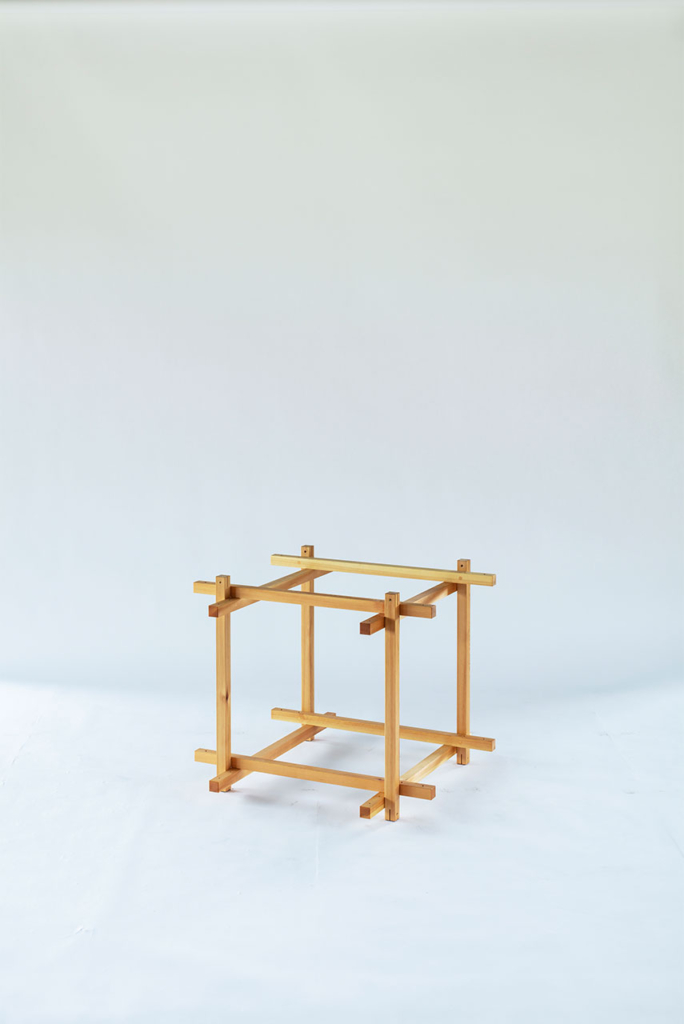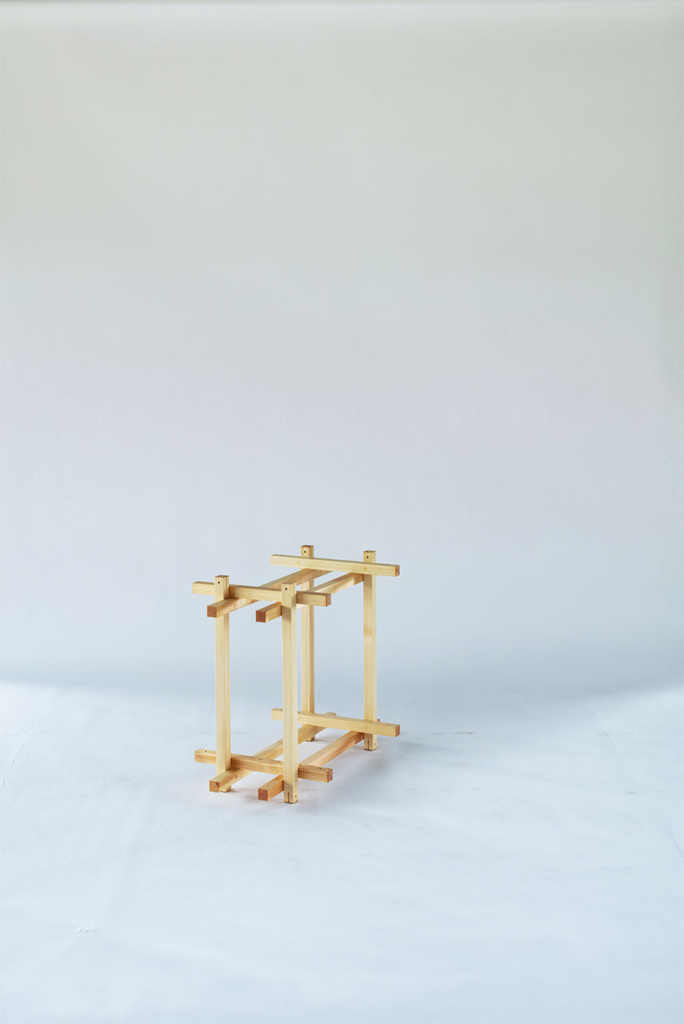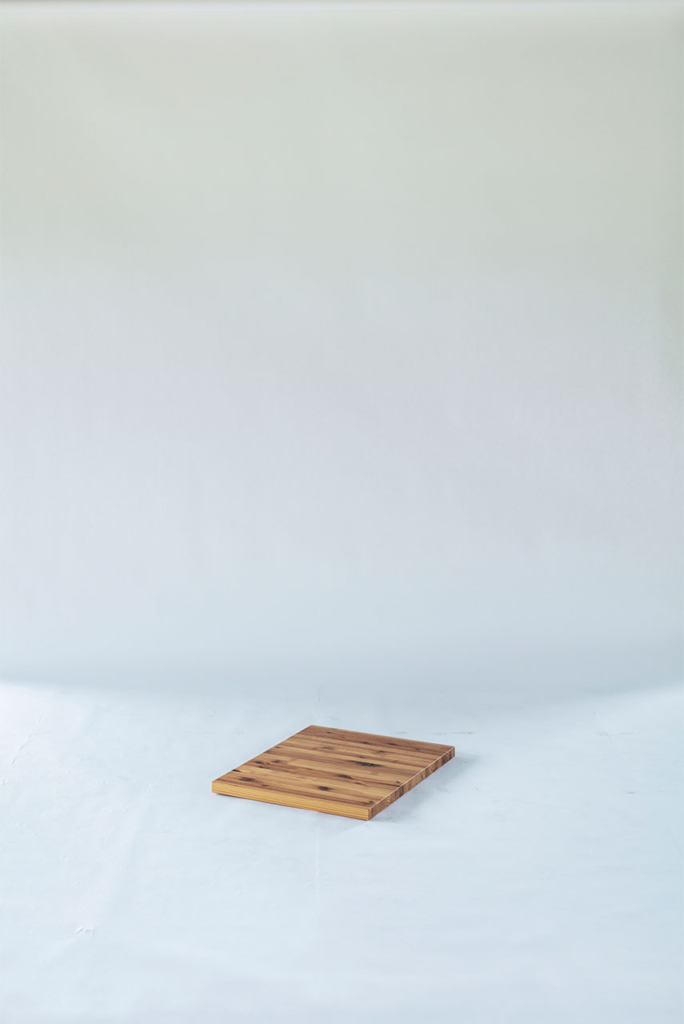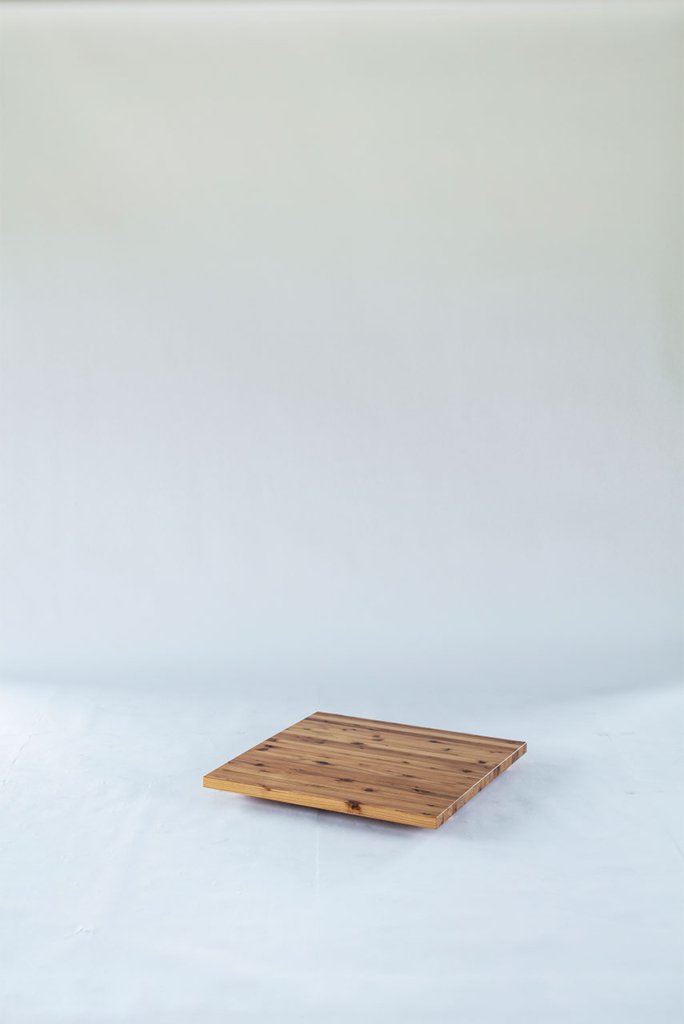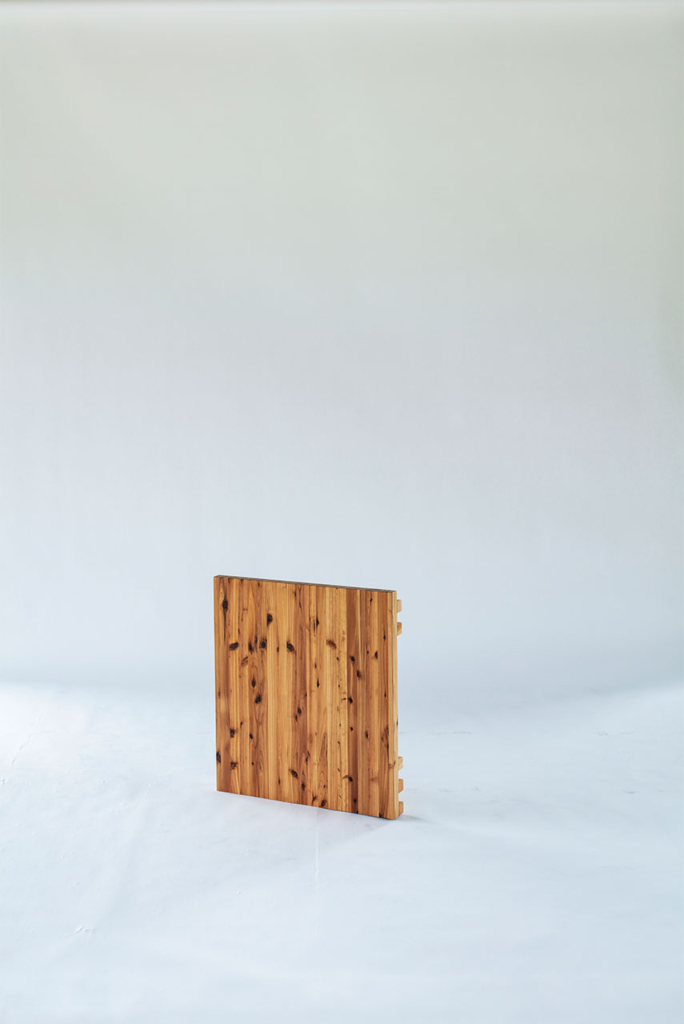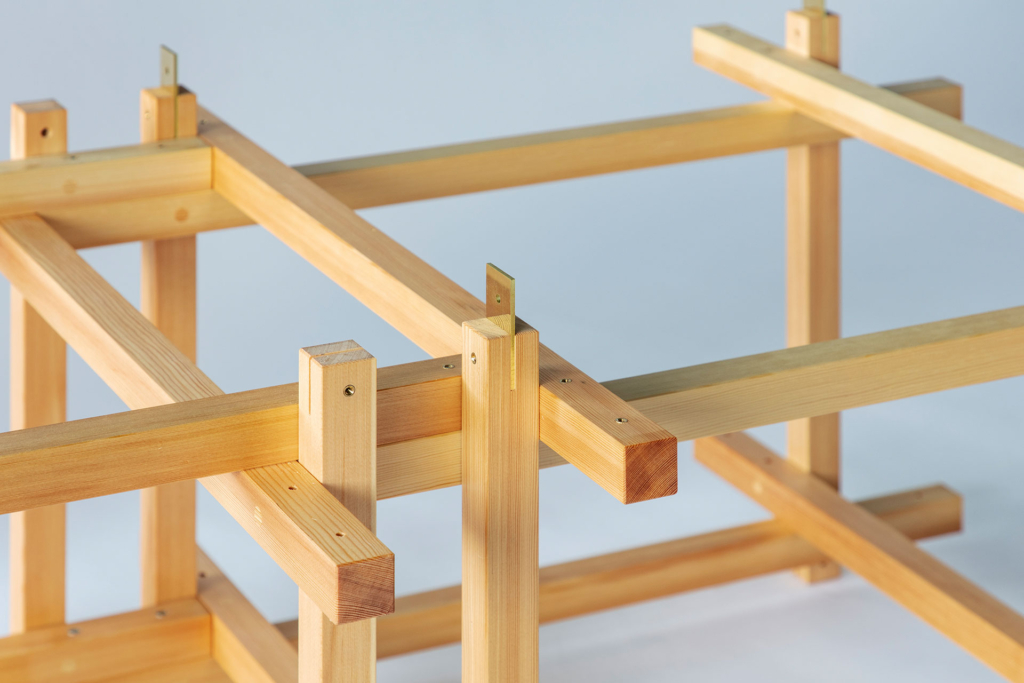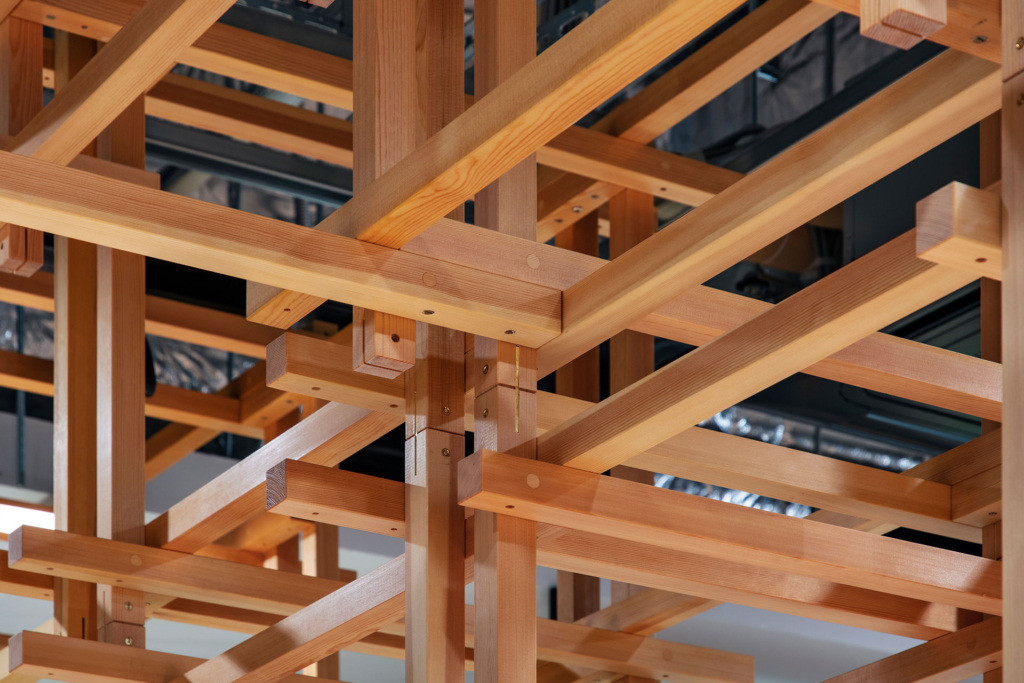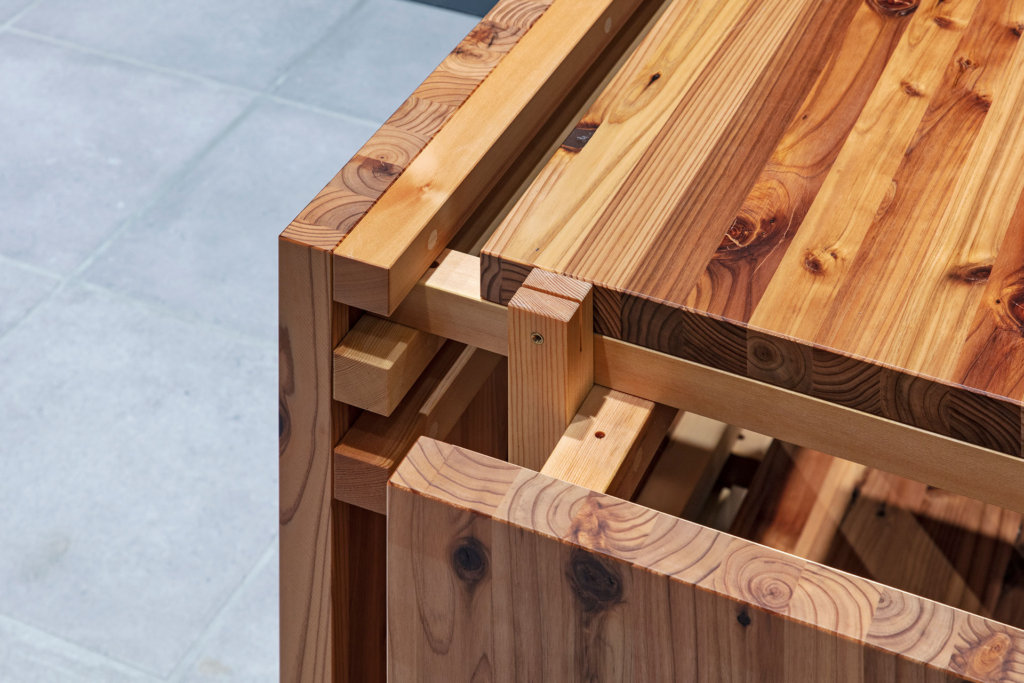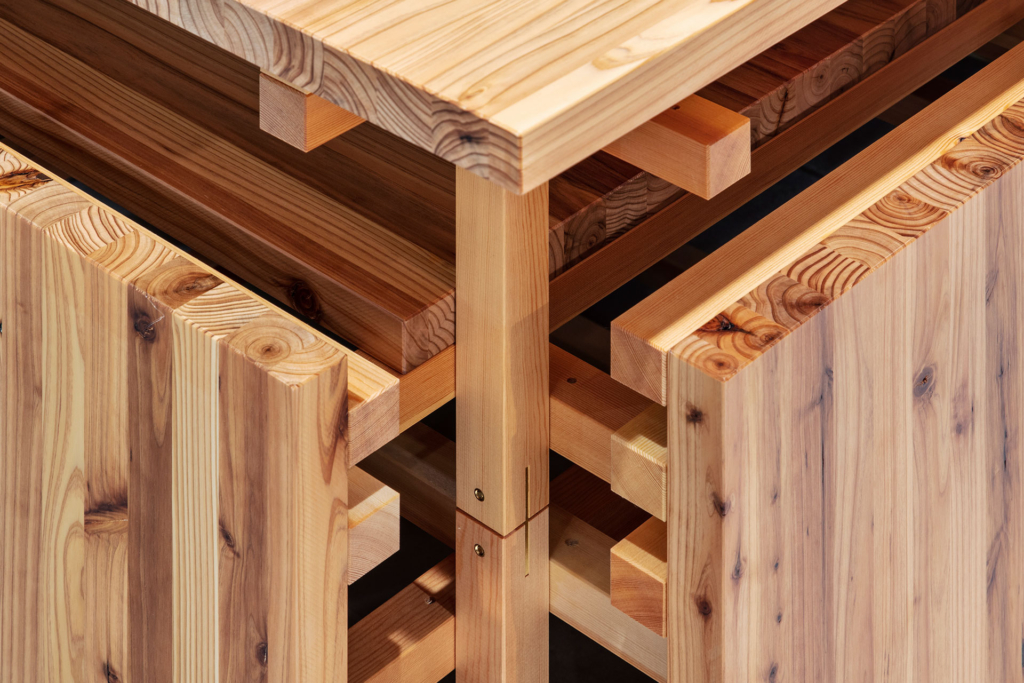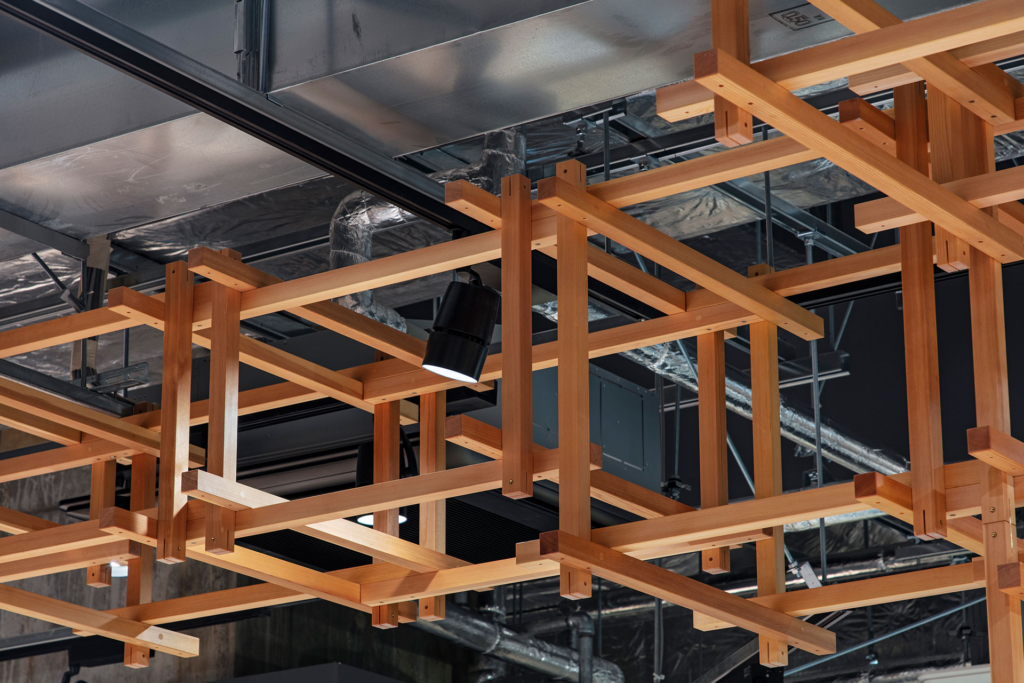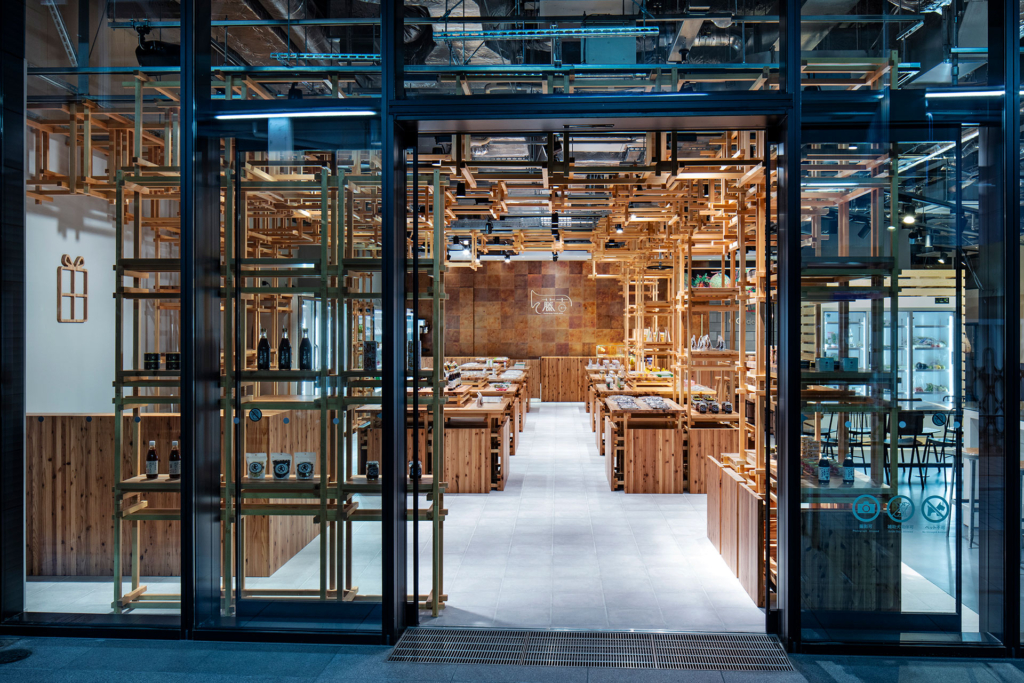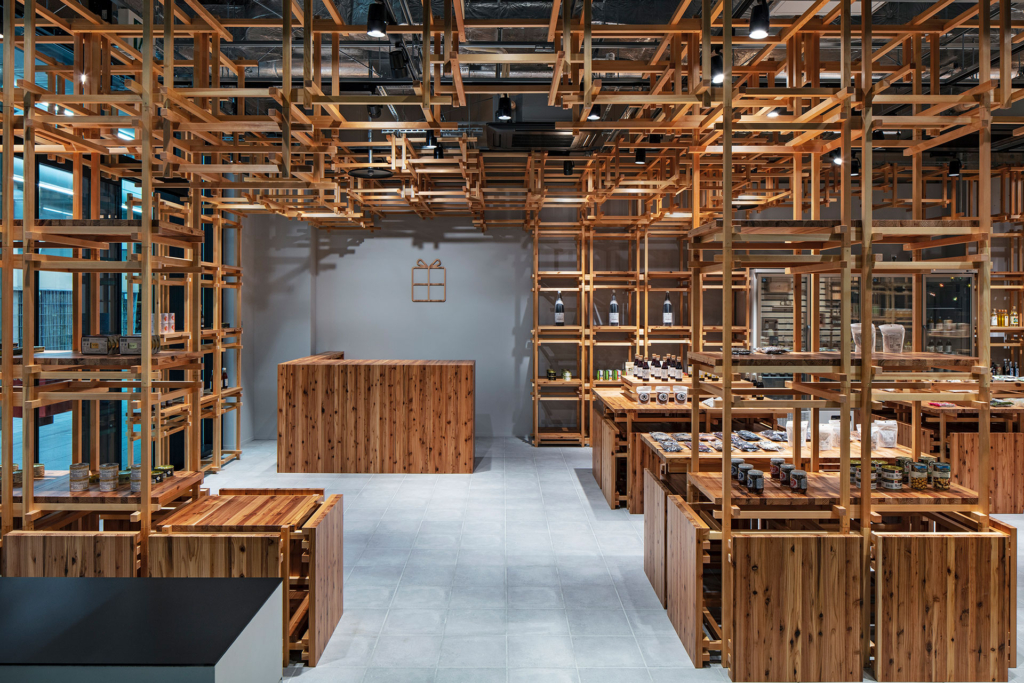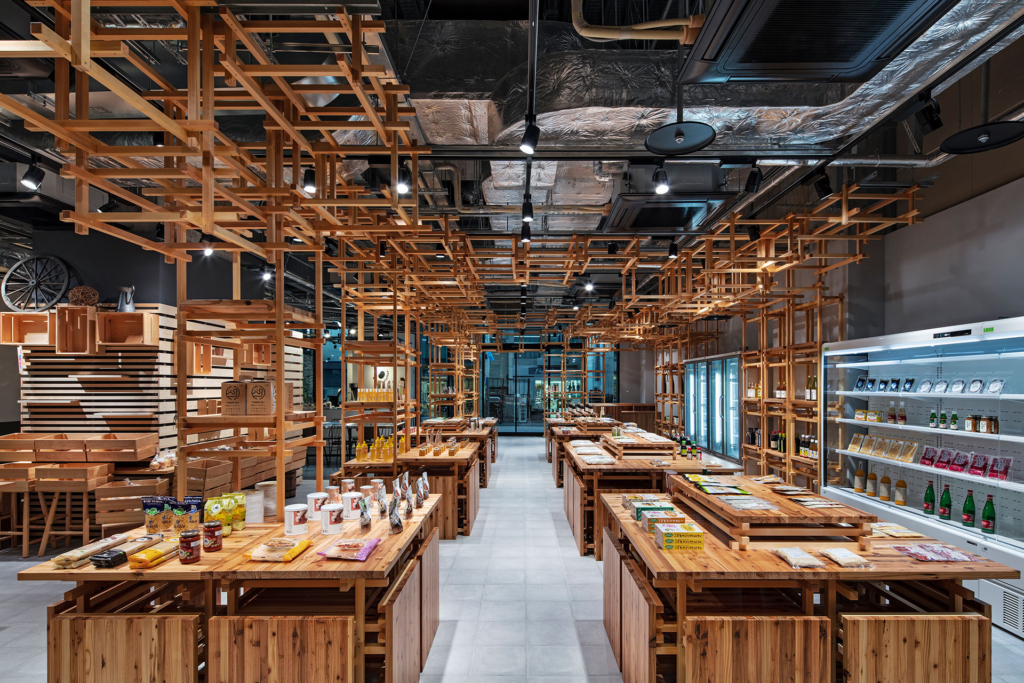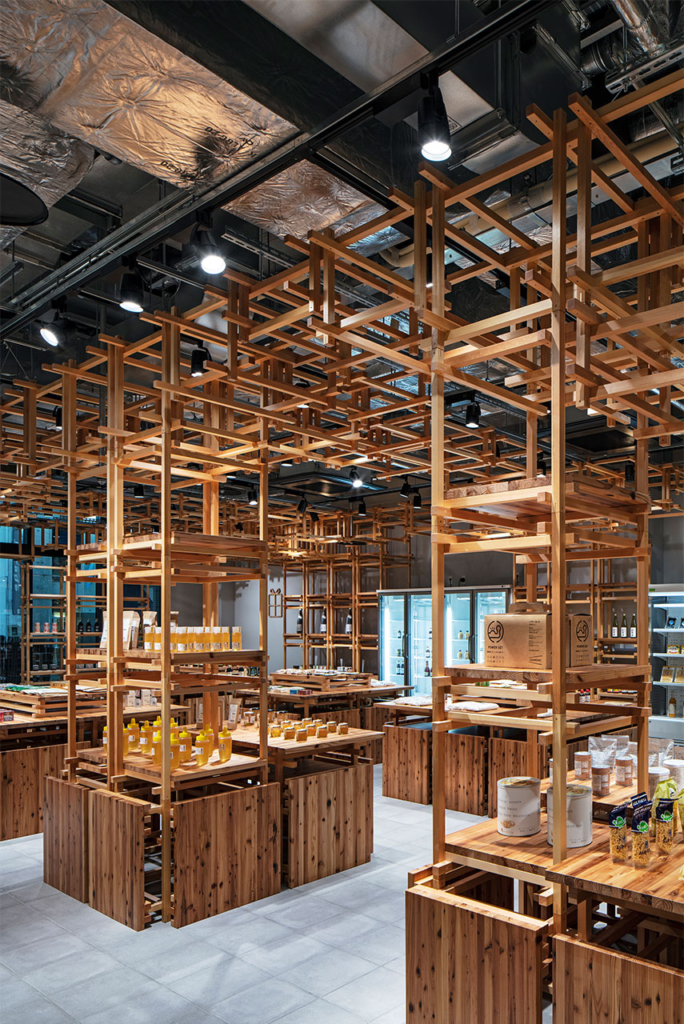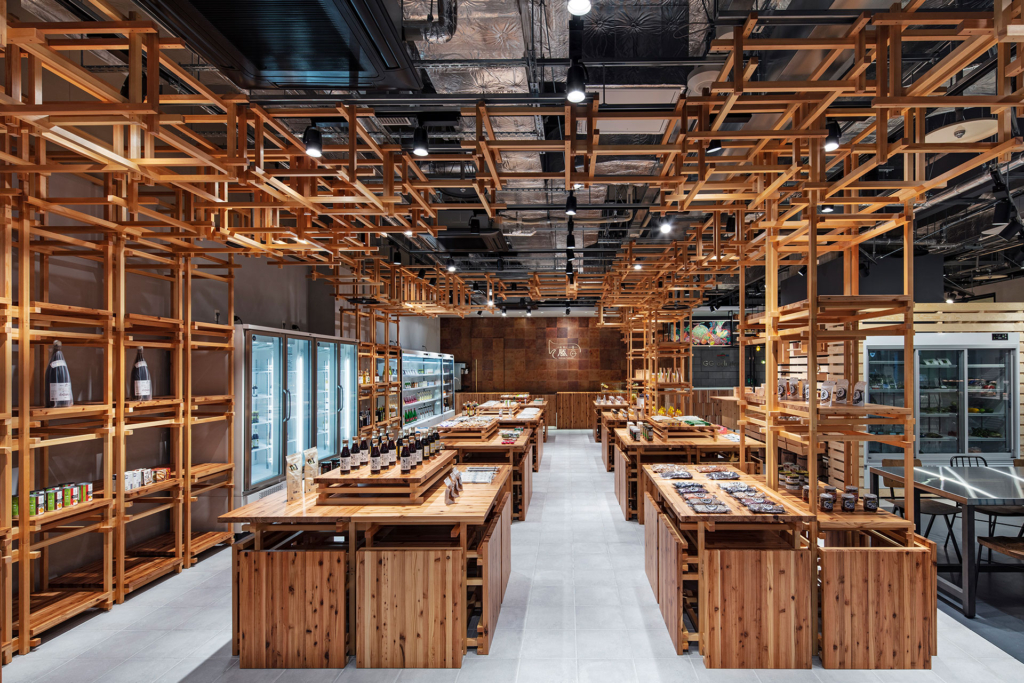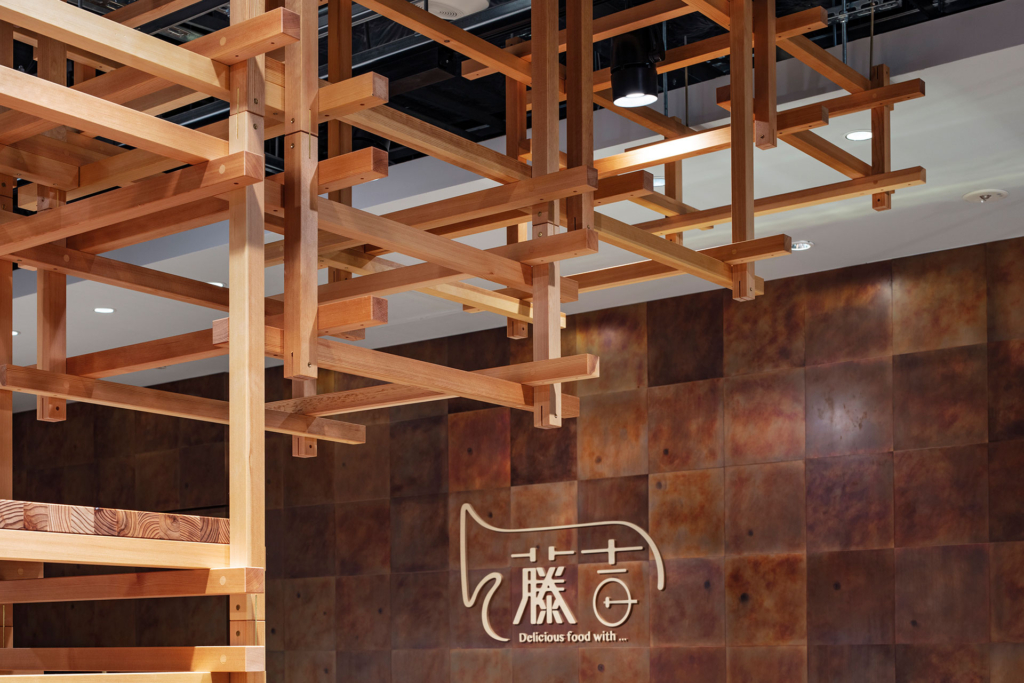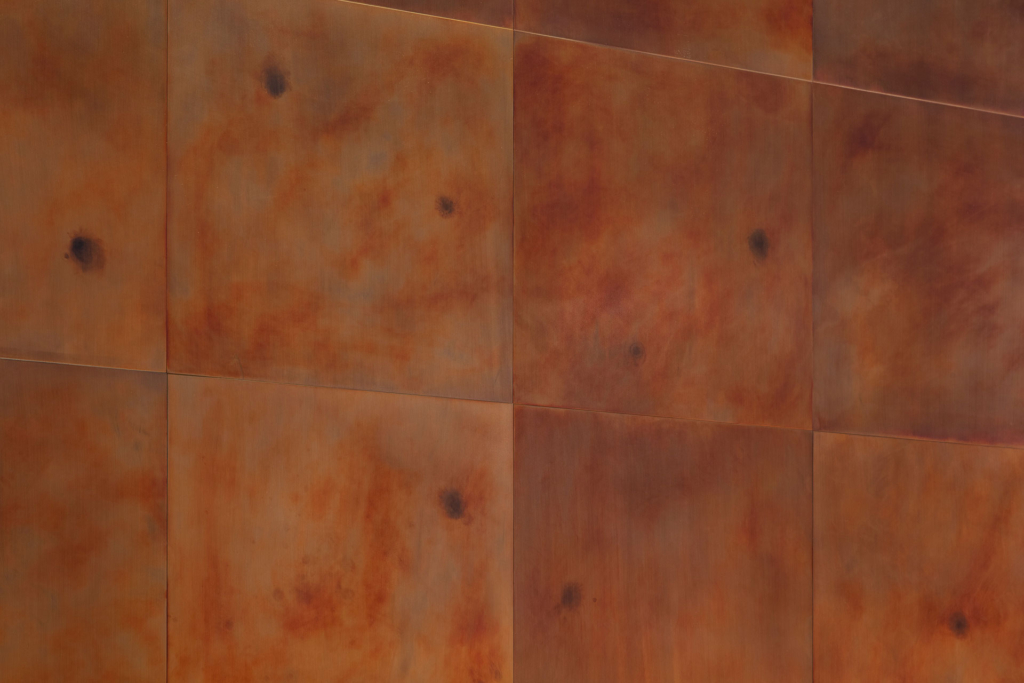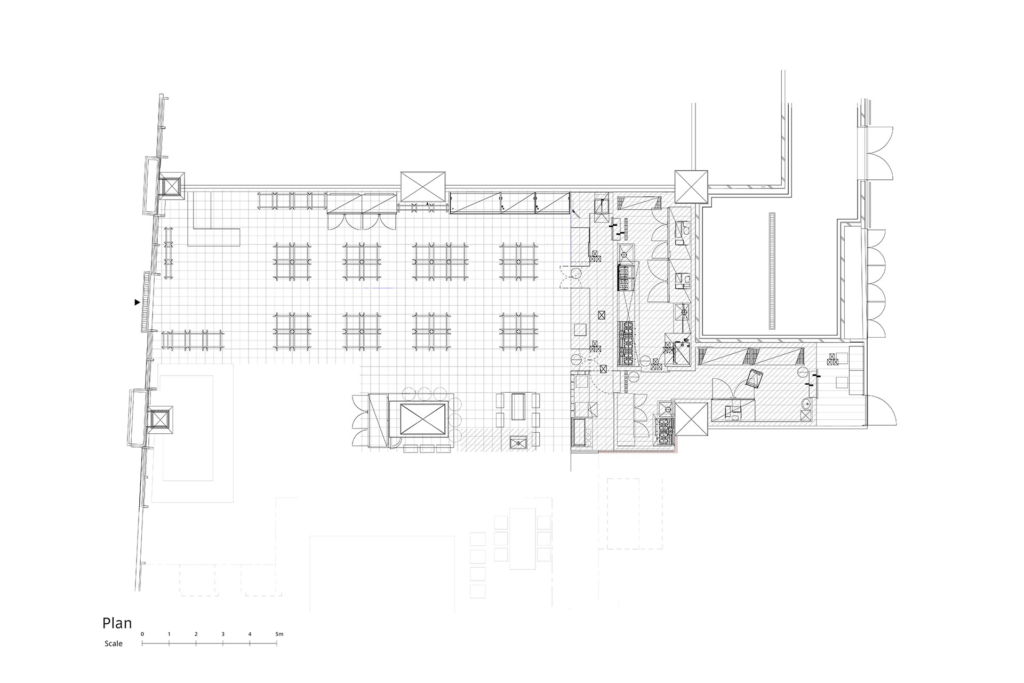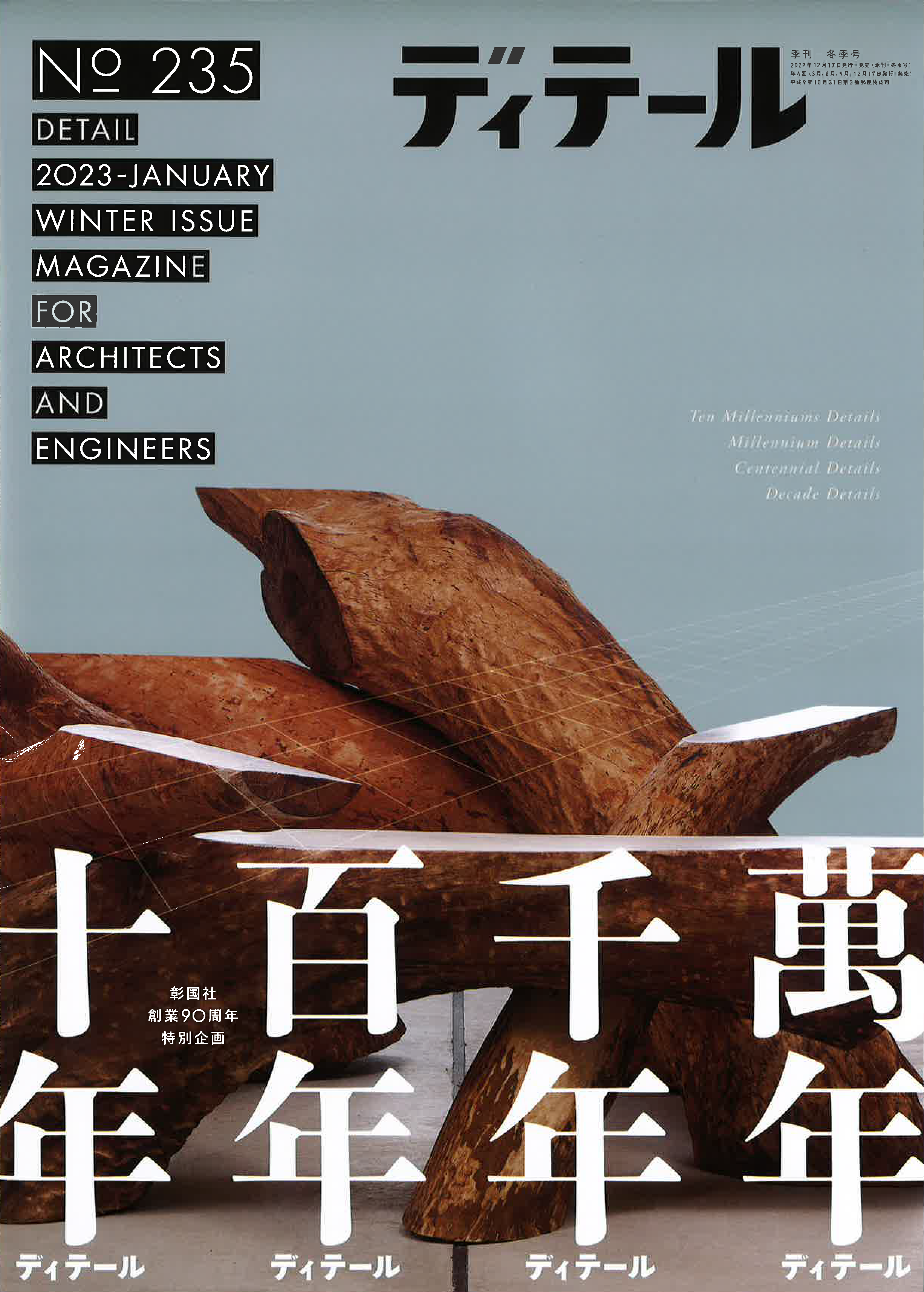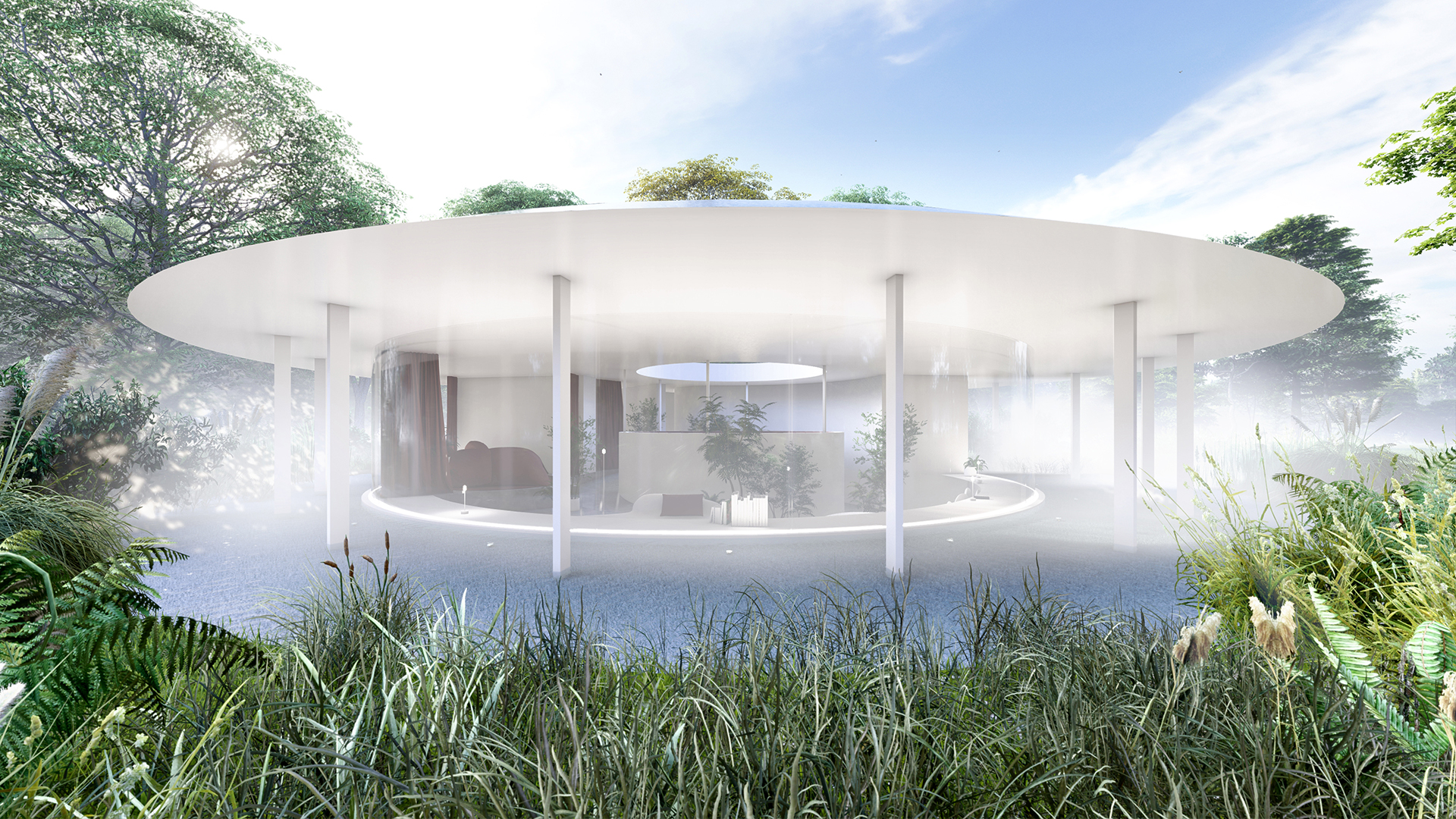interior
A piece of Voxel
Location
Toyama, Japan
Year
2020
Program
Shop and Deli
Total floor area
153.64m2
Architect
Aki Hamada Architects (Aki Hamada, Takeshi Tanabe, Ruta Stankevitute)
Structure
Enshu Structural Consultants(Noboru Enshu)
Frame and Furniture
Yutaro Matsumoto Furniture
Copper Panel
Momentum Factory Orii
Photo
Kenta Hasegawa
全国からセレクトした日用品や惣菜を販売する店舗の計画である。物を陳列するための棚にもテーブルにもなり、さらに天井や門などの様々な要素にトランスフォームする格子のフレームを用いて空間を設計した。
This is a project for a store to sell daily necessities and prepared foods selected from all over the country. The space was designed using a grid frame that transforms into various elements such as shelves for display, tables, or even a ceiling and a gate.
CLICK
3次元空間での格子単位として、600mmx600mmx600mm Voxelの軸線を設定し、人の動きや物の配置に合わせて格子を計画していった。30mm角の松材を12本組み合わせて一つのユニットを構成し、スリットに真鍮のプレートを差し込み、インサートナットとボルトでそれぞれのユニットを連結し固定する。家具レベルの精密な工場製作によって現場での狂いを最小限に抑えた施工が実現した。それぞれのユニットの固定にはビスや接着剤を使わないため、計画の変更や転用にも容易に対応可能な柔軟なシステムでありながら、秩序と調和を空間全体に与えようとした。
As a grid unit in three-dimensional space, we set a 600mm x 600mm x 600mm voxel and designed the grid according to the movement of people and arrangement of objects. Twelve pieces of 30mm x 30mm pinewood timber are assembled to form a unit. Units are connected by inserting brass plates into the slits and fixing them with insert nuts and bolts. Factory production with the level of precision for furniture realized construction with minimum on-site error. As no screws or adhesives are used to fix the units, the system is flexible to design changes or conversions, aiming to create order and harmony to the entire space.
物が離散的に配置され浮遊し、個別の場がつくられる。透明なフレームの棚は表裏関係なく、自由に物が存在し、それによって固有の情景がつくられる。カウンター壁面には高岡の伝統工芸である銅板への着色技術を用いて、木の節のような点の独自のパタンを設計した。その点を鈍角二等辺三角形の再帰的な配置でプロットし、自然界に存在するような離散的なパターンを職人と共に制作した。
Objects are distributed and float, creating a sense of individual territories. The open shelving units have no front or back, so objects stand freely on them, creating a unique scene. For the wall behind the counter, we adopted a coloring technique for copperplates, which is traditional craftsmanship of Takaoka, and designed a unique dotted pattern like knots in a tree. The dots were plotted in a recursive arrangement of an obtuse isosceles triangle, and this distributive pattern, as if it existed in nature, was created in collaboration with artisans.

